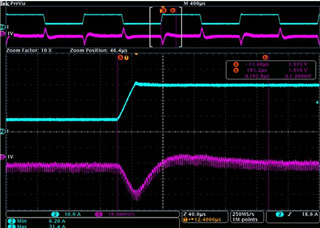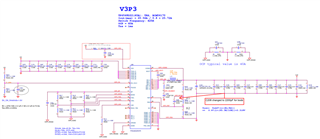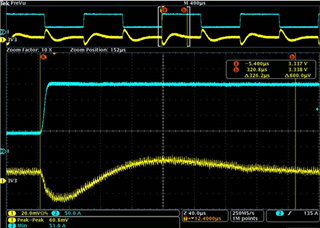Hi expert,
Customer has transient response time requirement that 0-30A, 1A/us, within 100us.
They used two TPS548D22, 1V, and 3.3V, the response time is 192.8us and 326.2us accordingly.
They are testing different Cff but it may failed bode plot test with small values.
Would you please suggest what else we can possibly do to improve the response time in the circuit?




Regards,
Allan

